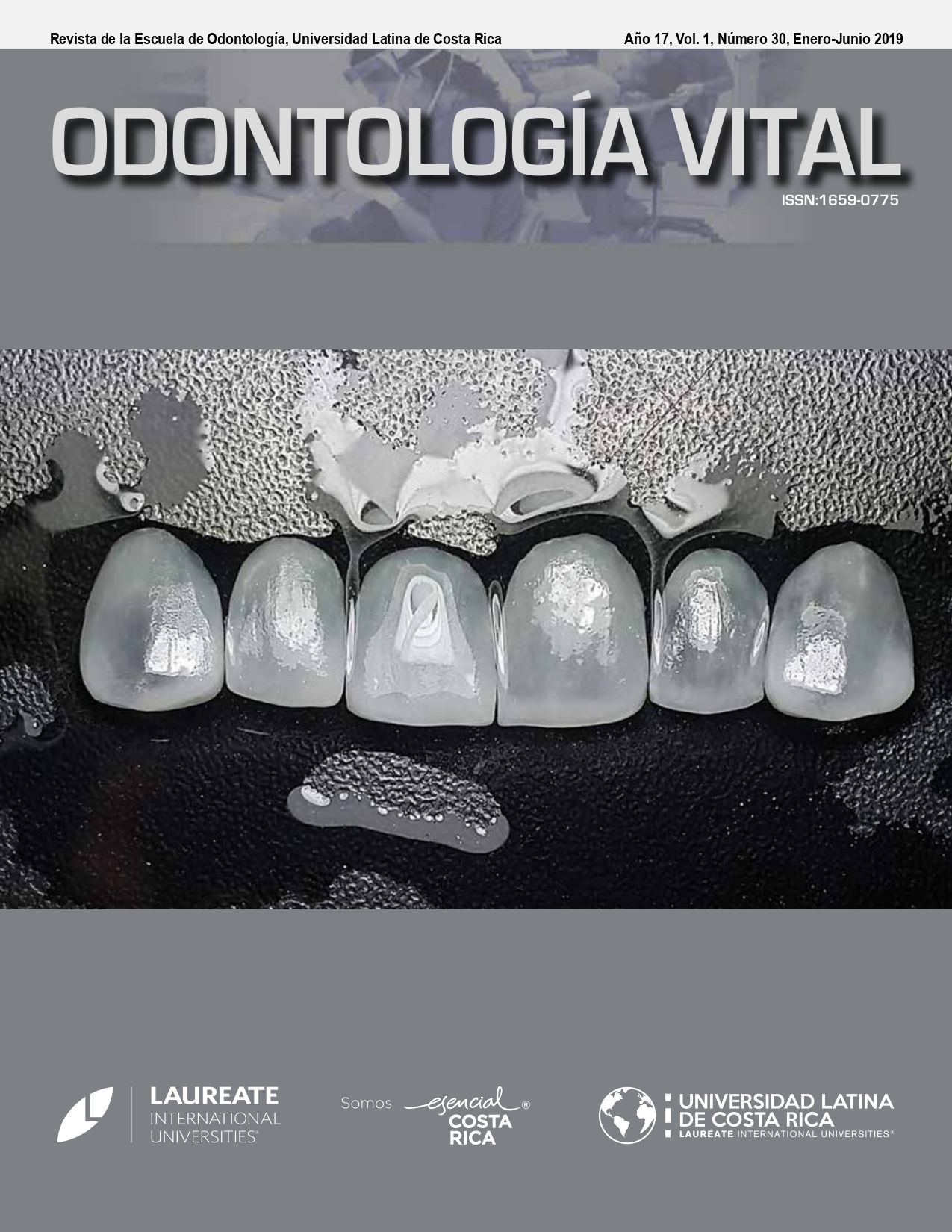Occlusion in children with mixed dentition, facial pattern study and type of occlusion in Ecuador
DOI:
https://doi.org/10.59334/ROV.v1i30.130Keywords:
dental occlusion, mixed dentition, clinical analysisAbstract
Objective: Define facial morphology and sagittal association in children with mixed dentition.
Materials and methods: Descriptive, observational and cross-sectional study of 100 students aged 6 to 12 years. The clinical evaluation of the facial profile of the occlusion was made through extraoral and intraoral photographs and study models by two examining evaluators with a reliability in their diagnostic criteria, considering the Capelozza criteria.
Results: a close relationship was found between the facial pattern with the molar and canine class. Except pattern II, in which there was correlation with class II molar, but not with canine class II. The heterogeneity in the distribution of the classes of pattern I was evidenced. In class II, the classes were more homogeneous with more than 70% of class II individuals in their molar relationship. The Pearson Chi Square test determined a p = 0.678 when considering the canine relationship on both sides.
Conclusions: The study revealed prevalence of canine class I deciduous in both genders. Class I and II molar permanent in equal proportions in both genders. With regard to age, those between 6 and 10 years were more tending to class II molar.
Downloads
References
Capelozza, F. (2005). Diagnóstico en ortodoncia. Dental Press. Maringá – Brasil.
Guedes-Pinto, A., Bonecker, M., & Martins C., (2011). Fundamentos de odontología, Odontopediatría. Brasil: Santos.
Da Silva L., & Gleiser R., (2008). Occlusal development between primary and mixed dentitions: a 5 year longitu-dinal study. J Dent Child, 75(3), 295-329.
Da Silva O., Correa A., Herkrath F., & Silva, G., (2008). Correlacao entre padrao facial e relacao sagital entre os arcos dentários no estágio de dentadura decídua: consideracoes epidemiológicas. Dental Press Ortodon Ortop Facial. 101-112. https://doi.org/10.1590/S1415-54192008000100012
Da Silva, G., Gamba, G., & Silva L., (2013). Ortodontia interceptiva, Protocolo de tratamento em duas fases . Sao Paulo, Brasil: Artes medicas.
Vellini, F., (2002). Ortodoncia diagnóstico y planificación clínica. Sao Paulo - Brasil: Artes médicas.
Abu, A., & Richardson A., (2003). Growth prediction in Class III patients using cluster and discriminate function analysis. Eur. J. Orthod. 25(6), 599-608. https://doi.org/10.1093/ejo/25.6.599
Perugachi, O., (2014). Relación entre maloclusiones dentales y biotipo facial lateral mediante registro fotográfico de perfil en adolescentes que cursen el primer año de bachillerato del colegio COTAC - Quito. UDLA . Quito-Ecuador : Universitario.
Capelozza, F., de Almeida C, Li A & Pereira L., (2007). Proposta para classificao, segundo a severidade, dos indi-viduos portadores de mas oclusoes do Padrao Face Longa. R Dental Press Ortodon Ortop Facial, 12(4), 124-148. https://doi.org/10.1590/S1415-54192007000400014
Broadbent, B., Broadbent, B., & Golden W. Bolton, (1975). Standars of dentofacial developmental growth. St. Louis, Estados Unidos: CV Mosby. 187-230
Arya BS et ál., (1873). Prediction of first molar occlusion . Am J Orthod, 63, 610-621. https://doi.org/10.1016/0002-9416(73)90186-3
Moyers, R., (1992). Manual de ortodoncia (4a edición ed.). Buenos Aires, Argentina: Panamericana . 274-313.
Van der Linden F., (1998). Ortopedia dentofacial práctica. A. J. Garcia, Trad. Sao Paulo, Brasil: Quintessence.
Jamison J., (1982). Longitudinal changes in the maxilla and the maxillary-mandibular relationship between 8 and 17 years of age. Am. J. Orthod. 82(3), 217-220. https://doi.org/10.1016/0002-9416(82)90142-7
Bishara, S., (2004). Ortodontia. Sao Paulo, Brasil: Editorial Santos.
Bishara, S., & Jakobsen J., (1985). Longitudinal changes in three normal facial types . Am. J. Orthod. Dentofacial Orthop. 88(6), 466-502. https://doi.org/10.1016/S0002-9416(85)80046-4
Bishara, S., (1998). Softh tissue profile changes from 5 to 45 years of age. Am. J. Orthod. Dentofacial Orthop. 114(6), 698-706. https://doi.org/10.1016/S0889-5406(98)70203-3
Klocke, A., Nanda, R., & Kahl B., (2002). Role of cranial base flexure in developing sagital jaw discrepancies. Am. J. Orthod. Dentofacial Orthop. 122(4), 386-391. https://doi.org/10.1067/mod.2002.126155
Downloads
Published
Issue
Section
License
Copyright (c) 2019 Evelyn Daniela Ochoa Ramírez, Mayra Alejandra Núñez Aldaz, Ana del Carmen Armas, Fabricio Cevallos González, Edison Fernando López Ríos

This work is licensed under a Creative Commons Attribution 4.0 International License.
Authors who publish with Odontología Vital agree to the following terms:
- Authors retain the copyright and grant Universidad Latina de Costa Rica the right of first publication, with the work simultaneously licensed under a Creative Commons Attribution 4.0 International license (CC BY 4.0) that allows others to share the work with an acknowledgement of the work's authorship and initial publication in this journal.
- Authors are able to enter into separate, additional contractual arrangements for the non-exclusive distribution of the Odontología Vital's published version of the work (e.g., post it to an institutional repository or publish it in a book), with an acknowledgement of its initial publication.
- Authors are permitted and encouraged to post their work online (e.g., in institutional repositories or on their website) prior to and during the submission process, as it can lead to productive exchanges, as well as earlier and greater citation of published work.







